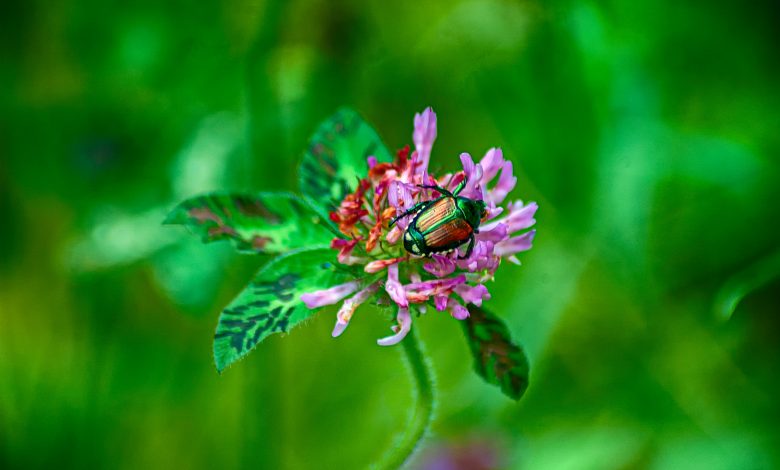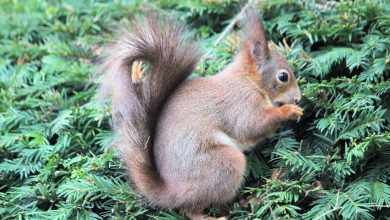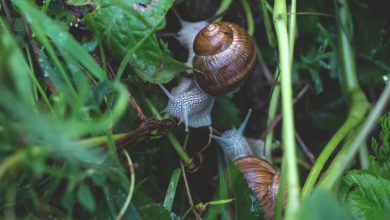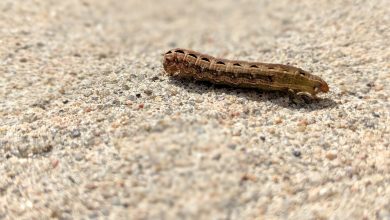How to Prevent and Remove Japanese Beetles

The Japanese beetle might be an interesting creature to look at, but no gardener wants to see more than a couple scouring their gardens. In North America, this beetle is a noted pest on more than 300 different plants, making it an unwelcome guest among almost every plant, tree, and flower.
This garden pest can do serious damage to a garden even when their numbers are relatively low. If you’re noticing an increase in the numbers of Japanese beetles in your garden, it’s important that you take steps right away to save your garden from destruction.
To help you put together an effective and long-lasting plan of prevention, the following information will be key. It will help you to recognize these beetles in their various stages, and you will be able to protect your garden for years to come.
If you want to know how to prevent the Japanese beetle in your garden, consider the following information and tips for a pest-free garden space.
The Basics of the Japanese Beetle
The Japanese beetle is a type of scarab beetle, which was made popular by the Egyptians. They are native to Japan, and they did not make their way into the United States until about 1916. The beetle is thought to have traveled across the ocean via a shipment of iris bulbs, but they were just getting started on their expansion.
Since their first long travel across the ocean, this beetle has managed to travel its way across the world. They have proven to be very tough beetles that can withstand varying temperatures and climates.
As of 2015, the beetle was reported to be in almost every state in the United States, except for some in the western end. In most places, the beetle is referred to as a pest, except in its native country of Japan. Here, the pest is kept at bay by predators, but in other countries, the number of predators present hasn’t been enough to slow them down.
The beetle is known to lay somewhat dormant for a few years, tricking gardeners and farmers into thinking the pest problem is gone. However, the following spring, they will have a yard full of their grubs.
The egg of this garden pest is small, oblong, and white. The larvae stage of this beetle displays a see-through body, later molting into a larger shape that is white with a yellow or orange head. They will eventually molt and leave these shapes behind, becoming a golden-colored pupa.
The adult Japanese beetle isn’t hard to miss; their outer shell is rather impressive, boasting a metallic copper color that makes it unmistakable. The beetle is approximately fifteen millimeters in length and ten millimeters in width.
The thorax and head of the beetle are an iridescent, dark green. They have two small antennae that flower at the end, as well as little tufts of white hair that project from underneath their wings. The beetle is quite beautiful, but their eating habits are what make them unfavorable.

Japanese Beetle Reproduction
The female Japanese beetle will lay anywhere between 40-60 ova during her life. The female will lay her ova underneath the earth, just below the surface. There, the ova will lay individually or in small clusters.
It takes about two weeks for the ova to hatch. As soon as they do, they will begin their larvae stage, feeding on the closest root systems they can find.
Over time, the larvae will turn into grub-like creatures and eventually emerge from the soil in the springtime. The Japanese beetle spends most of its life in its larvae form and only has one to two months to live as an adult.
The female beetle will lay her eggs in the soil when temperatures are warm. When the eggs hatch, usually late summer into fall, they will stay under the soil and feed on the roots. If gardeners aren’t careful, they could have a full infestation under their yard without ever knowing until the lawn is totally dead.
Gardeners will benefit knowing that the larvae are the most dangerous stage for these beetles, and adult forms will not stick around for very long. It is the larvae that need to be stopped between their ova and imago stages.
In most regions, the life cycle of this beetle takes one year. In regions where the weather reaches freezing cold temperatures, this process can take up to two years.
What Does the Japanese Beetle Eat?
As soon as the Japanese beetle is born, it will begin to search for food and ravage your garden. They will go for the roots of a plant and are most commonly found feeding off of the roots of grasses.
The larvae are quite picky about their foods, but the adult beetle is happy with a range of meals. Some of the most common crops they attack include strawberry plants, tomatoes, roses, corn, peas, okra, cherry trees, and blueberries.
If you have a garden that boasts rose bushes, you might be in some trouble with the Japanese beetle. This garden pest loves to eat roses, and they are easier to find since they hide amongst the petals. They will eat rosebuds from the inside out, so a thorough search of this flower is always necessary.
When it comes to flowers, the list of acceptable plants is almost endless for the adult beetle. If you’re not sure if you have a Japanese beetle issue, you’ll be able to tell from the way the plant has been eaten.
Japanese beetles generally skeletonize a plant, meaning they will eat entire leaves while leaving behind the veins. If present, the beetle will also feed on the fruits of the plants or trees that they’re eating.
Why Are They a Problem?
Having a couple of Japanese beetles in your yard isn’t a bad thing, but these numbers can quickly skyrocket if you’re not careful. In some cases, plants and fruits will become covered in hundreds of these beetles, and they will manage to defoliate the entire plant.
The beetles tend to come and go each year; some years they don’t make much of a fuss, while other years they will appear to be everywhere. An overpopulation of these beetles can be extremely destructive to people’s gardens and crops.
One of the biggest issues with Japanese beetles is the fact that they are so flexible with what they eat. With more than 300 different plants that will satisfy them, it’s hard to know which of your plants could be in danger of an infestation.
It can be difficult to eradicate a Japanese beetle population if it has already done damage, but there are steps you can take to try to lessen the damage or prevent them next year.
Additionally, you may feel inclined to go for a chemical insecticide to get the job done; however, we’d suggest waving the white flag and focusing on getting rid of next year’s batch. This way you keep your yard toxin-free, and you can start working on grub removal.
Another reason that these beetles can be such a problem is that they tend to attract moles as well. Moles love to dig up the soil in search of a grub snack, and if your lawn is full of grubs, you could be in serious trouble.
If you can manage to get rid of your grub problem, you will likely be able to solve your mole problem as well.

Japanese Beetle Prevention
If you have had issues with Japanese beetle in the past, you’ll want to take some precautionary measures for next year.
Check the Soil
To do this, you’ll want to cut out and remove a one-square-foot area of your grass and take a look at the situation. If there are more than a dozen grubs in the soil, then you will want to use some sort of insecticide to cut the population down.
Keep in mind, you don’t necessarily have an infestation if your garden is seeing lots of Japanese beetles. It could be that your neighbor has the nest, and your garden is just a tasty place for the beetles to eat. Checking your soil will tell you what’s really going on.
Utilize Milky Spores
Milky spores are a live organism that you can safely apply to your yard. They are a rod-shaped bacterium, and they are known for causing disease and death of the Japanese beetle grub.
The catch is that the milky spores may not take full effect for a couple of years; however, it might be worth the wait if you can’t seem to get rid of your grubs.
Grubs who are in the vicinity of the spores will become infected and die within one to three weeks of exposure. As the grubs break down, the spores will make their way through the rest of the soil, killing grubs in their path.
Once the spores are established in your yard, they can protect the area from the grubs for as many as two decades.
Nematodes
Another option that may take a little longer for success is the introduction of nematodes into your soil. Nematodes are very tiny worms, some of which will be harmful to plants.
However, there is one kind, in particular, Steinernema spp,. which targets Japanese beetle grubs in particular. If you’re going to take this route, be sure to apply them to the soil when it’s cloudy or rainy.
They will die if they are exposed to the sunlight, which will ruin your entire operation. Use a watering can to help them make their way deep into the soil.
You can use nematodes on their own, or you can combine them with milky spores for an unstoppable duo.
Unfavorable Plants
If you know you have a Japanese beetle problem, you might want to consider switching up the plants you have in your yard. While the adult beetles have a long list of plants that they enjoy, there are a handful of plants that they dislike and avoid.
If you can plant some of these in your garden, you may be able to mark your space as undesirable for future seasons Some of these plants include:
- Boxwood
- Firs
- Lilac
- Oaks
- Magnolia
- Holly
- Red maple
- Pines
Cultivated Yard
Like a lot of pests, female Japanese beetles will be intrigued by long grasses and unkempt yards. These locations will seem safer to the beetle since the longer grasses can keep the eggs hidden away from diggers like birds and moles.
In order to deter females from laying eggs in your yard, make sure that your garden is well manicured and cultivated. If there is any garden debris, be sure to get rid of it as soon as possible. Keep your grass short, and tend to any grasses areas that seem to be dying.
A clean yard will help deter all kinds of creatures from laying eggs, creating nests, and overwintering for next year.
Change Irrigation Schedules
Japanese beetles work on a fairly straightforward schedule each year, so it’s safe to guess that the larvae will be active in the later summer and fall.
That being said, it might be beneficial to start changing up your irrigation schedule to different times so that you might turn up all of those eggs that are turning in larvae. If you normally irrigate in the spring, some beetles may have already broken free of the soil.
Try to do this twice a year if you have beetle issues, especially in the fall. This is just before the larvae will be heading deeper into the soil to overwinter.

Japanese Beetle Removal
The Japanese beetle has evolved quite well over time, and oftentimes their numbers can seem too big to stop. In some cases, this is true. The Japanese beetle works quickly, and they don’t have many predators that you can introduce to your garden.
Birds don’t usually go for these beetles, and they know them too well from their color. There are some breeds of wasps and flies that will eat them, but there are too few of them to make a real difference.
If you’re trying to get rid of Japanese beetles in your garden, just know that you won’t stop them all. Even as you wipe out a group, a new fleet will likely be on their way.
The good news is, this form of adult beetle doesn’t stick around for too long. You’ll only see them for about a month, and then they’ll be gone. Knowing that you might have another infestation issue next year, you can take the precautions now to stop the grubs that are lying in wait.
Insecticides
The grub phase of the Japanese beetle can be the most devastating, so it’s important to nip this problem in the bud. If you are seeing grubs coming up to feed, usually in the late summer to early fall, you might try an insecticide. If you can, go for something organic and eco-friendly.
If you’re already dealing with the adult beetle, you’ll want to spray during the warmest months of May, June, and July.
Hand Removal
With an adult infestation, sometimes the easiest way to rid your garden of the pests is to do it by hand. You can either squish the beetles you find, or you can place them in a jar of warm water and soap.
Adult beetles are usually very easy to spot, and you’ll often find them right on the top leaves of your plants. If you have fruit trees or bushes, make sure to do a thorough check from top to bottom.
Neem Oil
If your plants are already being eaten by the Japanese beetle, you can try to spray them with neem oil. This is an organic insecticide that seems to work well with an array of pests.
Make sure that you spray the entire plant, as well as the bugs. With the spray on your plants, you will notice that the amount of feeding will reduce significantly. Use neem oil as soon as you notice Japanese beetles in your yard.
If you spray, you might also be able to keep these pests at bay:
- Crickets
- Mites
- Sawfly
- Scale
- Mealybugs
- Aphids
Grubicide
To truly stop a Japanese beetle infestation, you need to stop them at the source. The grubs are the ones you should be worried about since the adults will already be long gone.
Chemicals are bad for the earth, the plants in your garden, and even you. We don’t suggest using chemicals, especially those with sevin in them. Sevin is a pesticide ingredient that will harm other animals in the earth, including beneficial organisms and earthworms.
Instead, look for a granular insecticide often called a grubicide. These are made with synthetic chemicals that are deemed “mildly toxic.” If you are able to use this in low doses and exact to the instructions, you should only have to use it once or twice to get the result you’re looking for.
Feed the Birds
Birds aren’t interested in eating the adult Japanese beetle, but they are certainly not picky about grubs. If you have a nice bird population in your garden space, utilize this to your advantage.
Head out into the yard, and stir up some of the soil that is struggling due to grubs. Flip over a few inches, and you’ll probably expose some of those white grubs. Birds will notice these in an instant and swoop them up.
Leave the grubs in a similar location, so that the birds can swipe them up before they manage to creep back down into the soil.
If you don’t have them already, consider adding some bird features to your garden to entice the grub eaters to come by more often. You can incorporate some bird feeders and birdhouses, as well as a birdbath. Pay close attention to what kind of birds are common to your area, and serve up seeds that they like best.
This is the most natural way to rid your yard of grubs, and it’s a win-win for you and the birds.
What Not to Do
One of the more popular approaches to stopping Japanese beetles was to implement a beetle trap in the garden. The beetles would be drawn in by an attractive scent and then be unable to escape.
Unfortunately, recent studies have found that these traps are not actually effective in getting rid of Japanese beetle infestations; in fact, they have managed to do the opposite! Instead of capturing and slowing the beetle populations, the traps have instead managed to act as beacons for other beetles.
The end result is a worse infestation than there was to begin with, so we do not recommend going with a beetle trap.
If you do want to try a trap, we would only suggest using one if you have a large garden. Placing it in a small garden will only show the beetles where to go for more food. A trap in a large yard may keep them away from your garden plants long enough to capture them.
Japanese Beetle Prevention
Many gardeners know the plight of dealing with the Japanese beetle. Sometimes, even the greatest level of prevention will not stop some of these pests from making their way into your garden space.
That being said, the prevention tactics suggested will certainly help you to avoid huge droves of these pests. It’s especially helpful to be knowledgeable about their life cycles and to be able to recognize where and how to stop the grubs in their path.
If you’re going to be planting some of their favorite foods (roses and fruits), then it’s ideal to take some extra precautions every spring and early fall. Even if you’ve never had a Japanese beetle issue before, they have been known to disappear for a few years, then come back with vengeance.
Even if this is the case, taking preventative measures will ensure that when they do show up to your garden, you will be ready for them.


